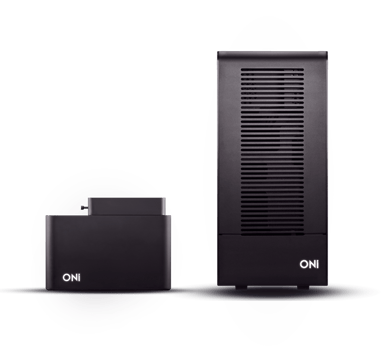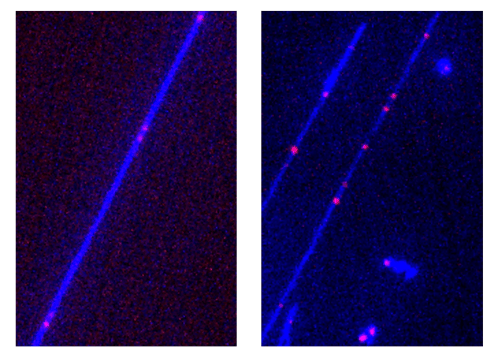Challenge: Identifying epigenetic modification
Epigenetics is an exciting field concerned with the regulation of gene expression due to non-genetically encoded factors, a classic example being DNA methylation, which regulates transcription. Epigenetic modifications play a key role in development, and determine how cells differentiate, turning from stem cells into the variety of cell types that make up our bodies. Epigenetic chromatin remodeling is important for DNA double-strand break repair, which, if not meticulously controlled, can cause a predisposition to cancer and neurodegeneration.
Solution with the Nanoimager: Mapping epigenetic sites with the Nanoimager
 Recent developments in labeling have permitted identification of epigenetic sites by single-molecule fluorescence. The Nanoimager can image the sites of interest, mapping their density and consistency across DNA strands. The DNA is attached to a surface and sites for epigenetic modification can be marked out with fluorescent molecules, which are detected with high signal-to-noise by the Nanoimager. With four laser lines, the Nanoimager can image several molecular species bound to the DNA.
Recent developments in labeling have permitted identification of epigenetic sites by single-molecule fluorescence. The Nanoimager can image the sites of interest, mapping their density and consistency across DNA strands. The DNA is attached to a surface and sites for epigenetic modification can be marked out with fluorescent molecules, which are detected with high signal-to-noise by the Nanoimager. With four laser lines, the Nanoimager can image several molecular species bound to the DNA.
Case Study: Revealing epigenetic modifications with single-molecule imaging
 In the data shown in the figure, DNA (blue) was extended in nanochannels and labeled with YOYO dye. Fluorescent labels (red) were attached by click chemistry to 5hmC sites. Such samples are used to complement sequencing data and to detect structural variation across DNA strands. This is just one example of where single-molecule imaging with the Nanoimager can extract complex information from individual DNA strands to characterize epigenetic modifications. Moreover, the dynamic information offered by single-molecule fluorescence imaging has the potential to measure the binding rates of enzymes at the epigenetic sites.
In the data shown in the figure, DNA (blue) was extended in nanochannels and labeled with YOYO dye. Fluorescent labels (red) were attached by click chemistry to 5hmC sites. Such samples are used to complement sequencing data and to detect structural variation across DNA strands. This is just one example of where single-molecule imaging with the Nanoimager can extract complex information from individual DNA strands to characterize epigenetic modifications. Moreover, the dynamic information offered by single-molecule fluorescence imaging has the potential to measure the binding rates of enzymes at the epigenetic sites.
Read more about DNA-PAINT showing sub-20 nm resolution using the Nanoimager and the different super-resolution techniques it supports.
Share this article: